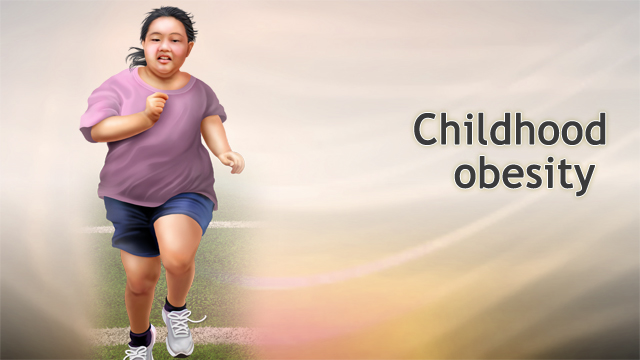Defining overweight and obesity in children
Obesity means weighing more than what is healthy for a given height. Obesity is a serious, chronic disease. It can lead to other health problems, including diabetes, heart disease, and some cancers.
Obesity is becoming much more common in childhood. Most often, it begins between the ages of 5 and 6 years and in adolescence.
Childhood
Obesity in children means having a weight that is higher than what is healthy for a child’s height. Obesity is a serious, chronic disease. Over tim...
Read Article Now Book Mark ArticleChild health experts recommend that children be screened for obesity at age 2 years. If needed, they should be referred to weight management programs.
Childhood obesity - Animation
You may have heard of the childhood obesity epidemic. But is it real? And if it is real, how important is it? And the answer is yes, it's very real. Up until about 1988, kids' weights in the United States were pretty constant over the years. But since 1988, they've been skyrocketing. And that's important for a few reasons. One of them is that what ever our weight is today, people tend to gain weight gradually over time. So if you're already overweight as a child that sets you up to be really overweight as an adult. And all the more so as a child because when kids, before puberty especially, are putting on extra weight, they tend to make new fat cells. Where as adults, when they're getting overweight, tend to have the fat cells they already have get larger. People who make more fat cells during childhood find it easier to gain even more weight as an adult and harder to lose weight. So kids are setting habits in their metabolism and even the structure of their bodies as a child. Childhood obesity is a big problem. But it's not just because of the way fat looks. It's a health problem as well. In fact a ticking time bomb. When I started in pediatrics not that long ago, it was rare to see some of the common conditions of middle age in children. Things like high blood pressure, or abnormal blood sugar, waist size over 40 inches, abnormal cholesterol. Those things were really rare in kids. But in a recent study, about two-thirds of American high schools students already had at least one of those. Two-thirds. They use to call something juvenile diabetes and there was adult onset diabetes, the kind that you get often from being overweight. Well now, what use to be adult onset diabetes, type 2 diabetes, is more common by age 9 because of the obesity epidemic. It is a ticking time bomb. The good news is that it's never easier than today to start to make a difference in a child's life.
Measuring Body Fat
Your child's mass index (BMI) is calculated using height and weight. A health care provider can use BMI to estimate how much body fat your child has.
BMI
A good way to decide if your weight is healthy for your height is to figure out your body mass index (BMI). You and your health care provider can us...
Read Article Now Book Mark ArticleMeasuring body fat and diagnosing obesity in children is different than measuring these in adults. In children:
- The amount of body fat changes with age. Because of this, a BMI is harder to interpret during puberty and periods of rapid growth.
- Girls and boys have different amounts of body fat.
A BMI level that says a child has obesity at one age may be normal for a child at a different age. To determine if a child is overweight or has obesity, experts compare BMI levels of children at the same age to each other. They use a special chart to decide whether a child's weight is healthy or not.
- If a child's BMI is higher than 85% (85 out of 100) of other children their age and sex, they are considered at risk of being overweight.
- If a child's BMI is higher than 95% (95 out of 100) of other children their age and sex, they are considered to be overweight or have obesity.
Reviewed By
Neil K. Kaneshiro, MD, MHA, Clinical Professor of Pediatrics, University of Washington School of Medicine, Seattle, WA. Also reviewed by David C. Dugdale, MD, Medical Director, Brenda Conaway, Editorial Director, and the A.D.A.M. Editorial team.
Gahagan S. Overweight and obesity. In: Kliegman RM, St. Geme JW, Blum NJ, Shah SS, Tasker RC, Wilson KM, eds. Nelson Textbook of Pediatrics. 21st ed. Philadelphia, PA: Elsevier; 2020:chap 60.
O'Connor EA, Evans CV, Burda BU, Walsh ES, Eder M, Lozano P. Screening for obesity and intervention for weight management in children and adolescents: evidence report and systematic review for the US Preventive Services Task Force. JAMA. 2017;317(23):2427-2444. PMID: 28632873 pubmed.ncbi.nlm.nih.gov/28632873/.

 All rights reserved.
All rights reserved.